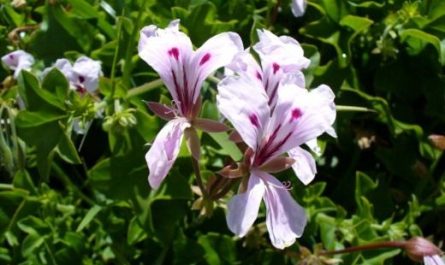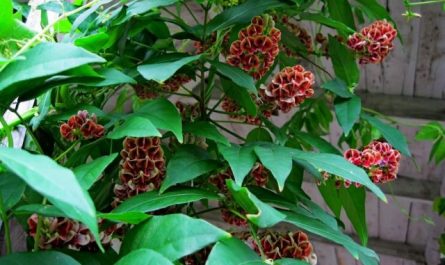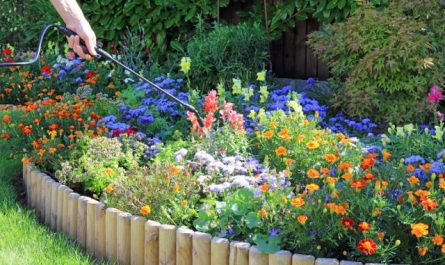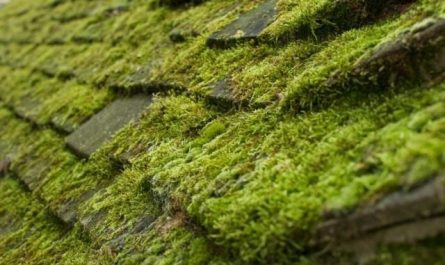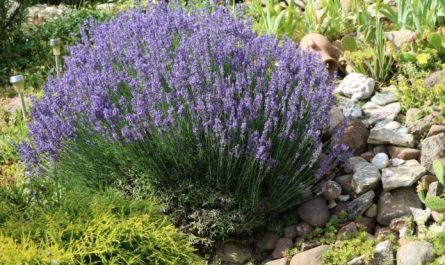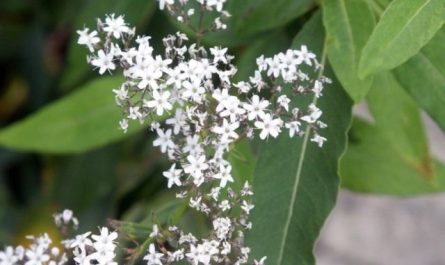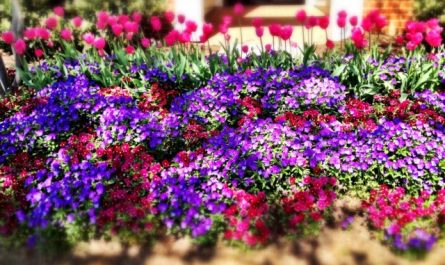Experiments with unusual combinations and non-standard colors in the garden are trendy today. For example, plants with black inflorescences. All black flowers are original and specific, and it is important to be able to select suitable partners and locations for them. Therefore, this article will not only introduce you to the range of plants with slate-black inflorescences, but also teach you the intricacies of using such mystical plants in garden design.

Black flowers in garden design
Of course, no living flower is truly black. Most often, the petals are such a deep shade of burgundy, purple, or blue that in certain lighting they appear almost black.
The motivation for choosing black flowers for the garden is different for each specific gardener and designer. Considering that plants with black varieties are usually rare, for someone such a flower will become a unique pearl of the collection. Someone will bet on impressing guests and neighbors with such a curiosity. And someone will simply want to add severity or “mysticism” to their garden.
Black is very easy to combine with different colors and, depending on the color of the accompanying plants, can be perceived differently. For example, black and white combinations will look stylish and strict, yellow and black – expressive, black and red – solemn, and black and blue sends us to mysticism.
It is highly inadvisable to create an exclusively black flowerbed combining plants with slate-black flowers or foliage. The slightest wine or purple tint along the edge of the flower, which are most often found in “black” varieties, adds depth to the black inflorescences and makes it easier to combine them with other plants.
The “shading” of the colors of the inflorescences in the flowerbed looks much more impressive: from flowers with almost black petals to burgundy, purple and pinkish ones.
As for the location of black flower beds, it depends first of all, of course, on the sun requirements of the selected plants. Of course, the need for light intensity in black flowers varies depending on the species, but in any case, it is important to keep in mind that most flowers of slate-black shades look best in at least partial sun.
A black flower growing in the shade seems like just an inconspicuous dark spot. Black flowers reveal their charm only when viewed from close up, while from a distance, slate-black plants will simply get lost and look like a gloomy mass.
The best place for black flower beds is in the immediate vicinity of recreation areas. By the way, potted compositions for balconies and terraces can also be created from plants with black flowers. For these purposes, annual plants in ink colors are suitable, for example, hybrid petunia (Black Velvet, Debonair Black Cherry, Sophistica Blackberry), Nemophila “Ladybug”, Poppy peony “Black Dragon”, morning glory blooms with dark purple foliage, etc.
Black flowers can also be used in vertical gardening. For example, almost black flowers have Clematis “Dark Ice” from the Viticella group. Some other varieties of clematis are also distinguished by such a deep dark purple or dark violet color that they look truly black.
1. Hellebore
The parade of black flowers in the garden will be opened by an original cold-resistant plant called hellebore, or wintergreen (Hellebore). Large flowers up to 7 centimeters in diameter of dark plum color have such varieties of hellebore as “Blue Lady” и “Purpuraskens”.

Like most varieties of wintergreen, both varieties feature charming, fluffy, light green stamens that liven up the flower, preventing it from looking too gloomy.
An elegant double variety of hellebore “Double Ellen Purple” evokes associations with a real lady in a black empire-style dress.
In floriculture, hellebore is valuable primarily because, thanks to its very early flowering, it occupies a niche when nothing else is blooming in the garden and there is little to please the eye. These hardy plants are evergreen and can easily tolerate shady, dry places where little can be grown.
However, if you plant hellebore in fertile soil and water it regularly, the small bush will soon turn into a clump covered with original black inflorescences. When growing hellebore in the garden, it is important to take into account that the plant is poisonous.
2. Hazel grouse
Another notable plant that blooms almost black flowers in the spring is the many-faced bulbous perennial from the lily family – fritillary.

Among the many varieties of primroses, there are also those that bloom “enchanted” black flowers. Among them broadleaf fritillary, Mikhailovsky, hazel grouse and some others – they are distinguished by dark purple, almost black petals. And the last one has an original checkered pattern, combining very dark and slightly lighter squares.
Fritillary blooms in April, its flowering period is about two weeks. The plant is very unpretentious, but when buying planting material, it is important to ensure that it is as fresh as possible, since overdried bulbs may not germinate. In the future, these types of fritillary will require minimal care, without regular digging and fertilizing.
3. Viola
Next, the parade of black flowers will be supported by the charming viola, or pansy. The popular cold-resistant biennial Viola Vittrock There are many varieties of black shades.

Pansies are distinguished by a pleasant velvety texture of the petals, which visually makes the dark purple color deeper and almost black. At the same time, a small bright yellow mark in the center of the petals adds expressiveness to each flower.
Viola, grown as a biennial, blooms very early, and in some years during its blooming period there may be return snowfalls. Can you imagine clumps of thoughtful black flowers among sparkling white snow? In my opinion, such a picture looks truly fantastic. Moreover, the cold resistance of viola will allow it to survive the cold snap without problems and continue to bloom until mid-summer.
Viola Wittrockiana has black color in the following varieties: “Black Knight”, “Black Crystal”, “Black Moon”. An interesting variety deserves special attention. “Brünig”, in which a thin bright yellow border is added to the main black background to enhance expressiveness.
All these varieties are distinguished by large flowers – up to six centimeters in diameter. But the variety “Can-can sapphire” Additional charm will be given by wavy corrugated petals, similar to exquisite ruffles.
Another variety of pansy is horned viola is represented by only one variety of black color – “Black Delight”This type of pansy is distinguished by small flowers and very abundant and long-lasting continuous flowering from spring to autumn.
4. Tulip
The next to come to the fore is the black tulip, as most varieties of this variety are late bloomers. The most saturated, close to black color has a tulip Queen of Night. This unique variety was bred back in 1944, but still has not lost its relevance. Due to the late flowering period, the buds of this tulip will open only by mid-to-late May.

Another black tulip Ronaldo, from the group “Triumph” blooms a little earlier – in early May, but has a lighter dark burgundy color. The almost black tulip is also found in the parrot group; for the variety Black Parrot The original jaggedness of the corrugated petals is characteristic. This black tulip also belongs to the late ones.
5. Oriental poppy
In late spring and early summer, another amazing plant blooms: east poppy. By color, oriental poppy varieties Midnight Similar to a prune, this variety combines all the mystical features of other oriental poppies: huge flowers with juicy petals and a bright green round seed pod surrounded by curling stamens with white anthers, which serves as the focal point of each flower.

Unlike many hybrid flowers, the Midnight poppy is also available as seeds. Like all oriental poppies, this variety has a deep taproot and is difficult to transplant. It is best to initially place the oriental poppy in a sunny place with loose sandy soil, which will contribute to its successful growth and flowering. When the poppy has finished flowering, you can leave the expressive seed pods on the bush or put them in a vase as dried flowers.
6. Aquilegia, or Watershed
The beginning of summer will mark the flowering of another charming perennial – columbine, or Aquilegia. Thanks to the efforts of the originators, the simple columbine has many varieties of the most unusual flower colors and even with double inflorescences.

Awesome grade “Black Barlow” combines terry and original coloring – its multi-petal flowers are almost black. Thanks to this combination, the columbine of the Black Barlow variety looks truly mystical. The diameter of the flower of this catchment is 4-5 cm, and the plant itself is quite tall – up to 80 centimeters.
In terms of care, aquilegia is unpretentious, for successful growth it is necessary to select a semi-shaded place with moderately moist and fertile soil. Aquilegia “Black Barlow” blooms in June-July.
7. Asiatic lily
At the end of June and the beginning of July, Asiatic lilies begin to bloom. Asian lilies will give gardeners a rich variety of almost black flowers (in reality, they have a deep burgundy shade), but it is very difficult to find similar colors in ITO hybrids, tubular and oriental lilies.

The most popular lilies with slate-black flowers: “Black Charm”, “Landini”, “Nightrider”, “Dark Secret”. In all the varieties listed, both the petals and the stamens with anthers are almost black. But in the lily «Queen of Night» The distinctive anthers are bright orange in colour.
Black lilies look especially impressive in combination with white or cream varieties, as well as lilies with light petals with a burgundy center.
All Asiatic lilies are quite winter-hardy, however, deep planting will help them survive the winter better, so the planting depth should be equal to the diameter of 3-4 bulbs. The place for lilies should be sunny or semi-shaded.
8. Daylily
Some varieties of lilies’ closest relatives, daylilies, also bloom almost black flowers. Such “magic” inflorescences are typical of such daylily varieties as “Black Stockings”, “Olive Bailey Langdon”, “Whoopi” и “Starling”Hybrid daylilies have double and semi-double ink flowers. “Boogieman” и “Voodoo Dancer”.

9. Georgina
From mid-summer until the first frosts, the garden will be decorated with strict dahlias, among which you can also find black varieties. The most popular black dahlia “Arabian Nights”, has medium-sized flowers (up to 10 centimeters). Their dark wine-red color appears almost black under certain lighting.

Some dahlias have dark bronze-brown foliage. This interesting feature can be found in varieties such as “Bronze Leaf”, Bishop of Llandaff, Amber Quartz and others.
10. Kalla
Extravagant black calla lilies give the impression of mystical “otherworldly” flowers. Calla lilies with almost black, dark burgundy or deep purple flowers are represented by a large number of varieties. The most popular among them are: “Black Forest”, “Odessa”, “Office”, “Black Star”, “Las Vegas” and others.

When choosing a location, it should be taken into account that callas are very moisture-loving, and it is recommended to plant them along the banks of reservoirs. Strict callas look especially harmonious near water sources of regular shape – square, round or rectangular.
Calla lilies grow best in hot, humid locations in full sun. They can also be used as a focal plant in flower arrangements in tubs or garden containers. These hot natives of South Africa will bloom from midsummer until frost. For the winter, they should be moved indoors where temperatures will not drop below freezing.
11. Mallow
In early August, a very original black-flowered mallow blooms. Many mallows seem like a simple country flower, which cannot be said about the unique dark-colored variety “Nigra”.

This plant is a real giant, exceeding two meters in height. During the flowering period, the upper part of the bush is literally covered with large flowers with dark-burgundy petals with a waxy coating.
The creamy center of the petals acts as a convenient landing pad, attracting bees and other pollinating insects that adore these flowers and depend on them as a source of nectar in the garden.
Mallow can be grown as a biennial crop or as an annual plant with early sowing for seedlings.


